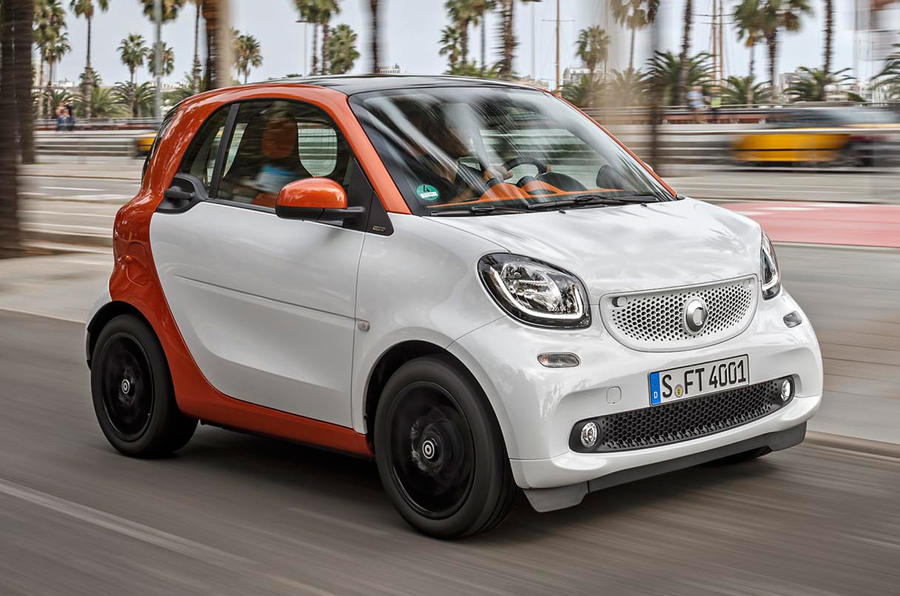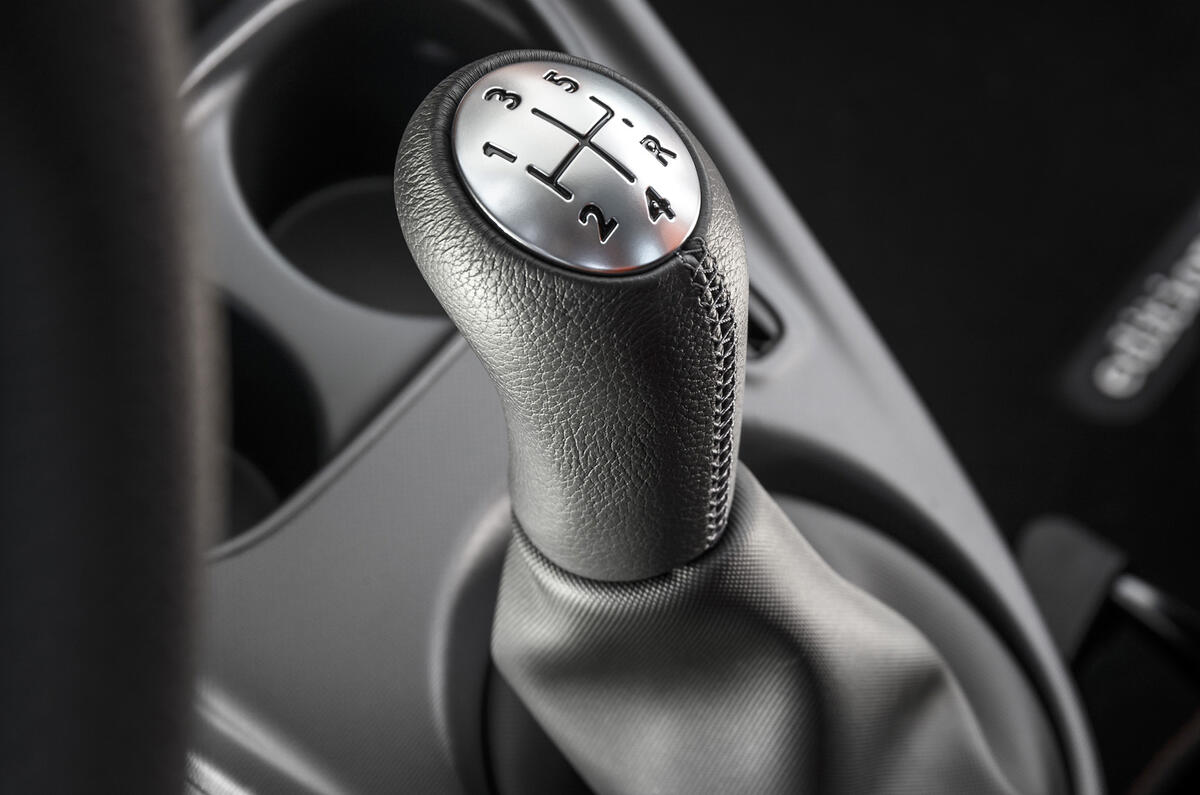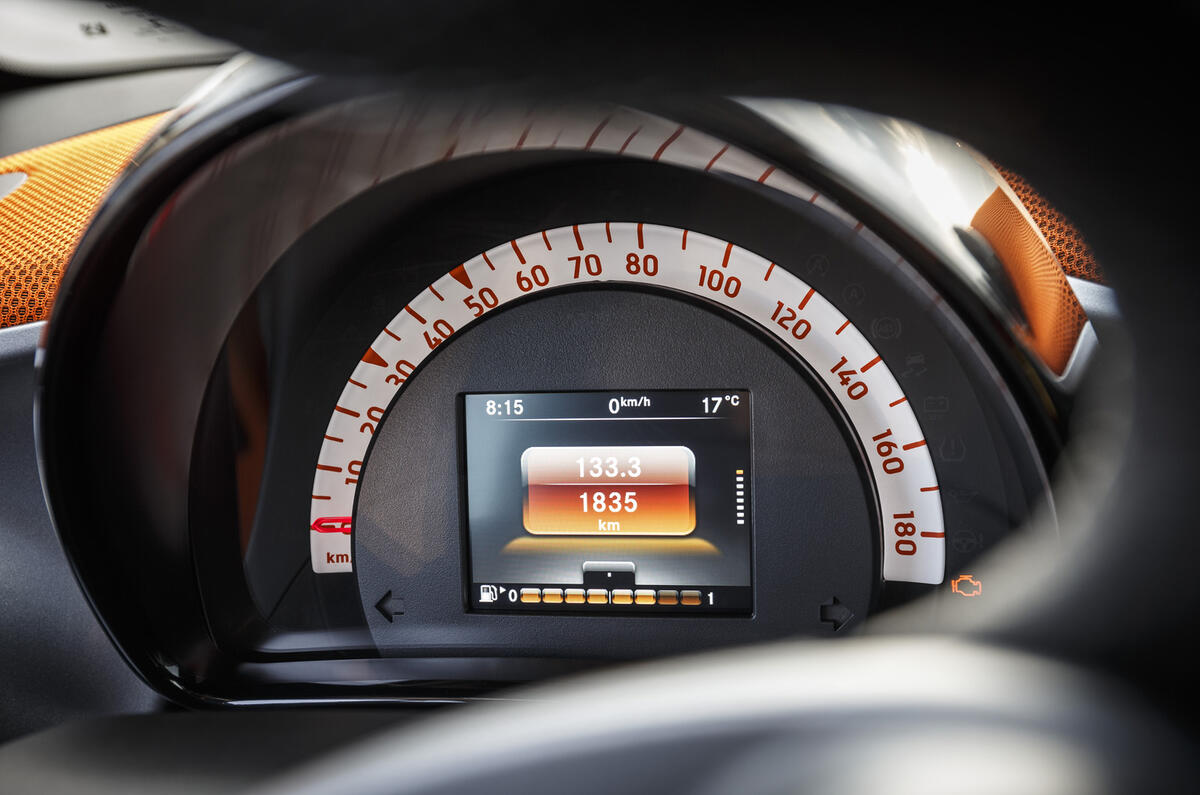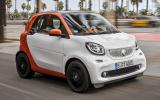What is it?
There has never been much to fault about the concept behind the Smart Fortwo microcar, which offers urban mobility for two people in a usefully compact and very stylish package. Previously, though, the car’s execution has had its flaws.
While the third-generation Fortwo doesn’t deviate too dramatically from the Mk2 model in terms of mechanical set-up – it retains the rear-engined, rear-drive layout of its predecessor, as well as the two-door, two-seat layout – there’s been a major focus on correcting the old car’s wrongs, most notably an unsettled ride and clunky transmission.
The Fortwo comes to market in tandem with a reinvigorated four-door, four-seat Forfour and both share their underpinnings with the new Renault Twingo.
The two Smart models share a common 1660mm width and 1550mm height, but the Fortwo is shorter than its four-seat relation. Indeed, its 2695mm length is the same as the previous iteration, although the wheelbase has been pushed out by 8mm to 1873mm.
The Fortwo and Forfour also have a new family look, particularly in terms of the front-end styling and the exposed elements of the Tridion safety cell.
Two powerplants are available at launch: a 999cc, three-cylinder naturally aspirated petrol engine that produces 70bhp and 67lb ft and a more powerful turbocharged 898cc, three-cylinder unit with 89bhp and 100lb ft on tap.
The other big development for the Fortwo is that the unloved, sloth-like five-speed automated manual has been consigned to history, replaced by a choice of a regular five-speed manual or, later in 2015, a six-speed, twin-clutch automatic.





































Add your comment
no style exists in industry
it seems to me that no manufacturer in the car industry has any distinct styling and as a result the industry is filled with cars that host a familiarity with another car in order the increase sales and competitive variety. everyone seems to be bucking the trend and for me personally its a bit sad.
Ford set the stage with the focus mk1 a radical, funky and original design and somehow its being lost through revamps and now everyone is following a similar approach with big headlights. Bangle BMW with too many odd creases to point a finger at was adopted by others, Audi's goatie grill now on most cars.
no one seems to have any originality in their design concepts but follow the one that's making a lot of waves. yet you may argue its just business as usual
Pointless car...
voyager12 wrote:Why? Priced
Judging by your comments and those of several others above, it seems that the ForTwo is still a car understood by the minority. Yes, it's not good value for money when you can even get its 4-seat sibling for a few hundred quid more...but the slight reduction in length compared to other city cars means that it really can be slotted into every tiny parking gap. Plus it's also very manoeuvrable in tight city streets and its plastic panels mean that it shouldn't be too expensive to repair small dings and scratches. You also don't have to worry about the body rusting away...and let's face it, I think many city cars aren't garaged so I presume are more prone to rust away. The auto transmission also makes sense in city use...it can get quite tedious changing gears yourself in traffic. Lastly, it's also a car which can comfortably fit tall people, unlike some city cars, especially those available in 5-door form only.
Personally I've never owned a ForTwo before but I can see its appeal, being someone who goes to places with limited parking and who only carries more than one passenger once in a blue moon. Actually, if the opportunity were to present itself, I would probably buy one...albeit probably not a new one.
A sight to behold